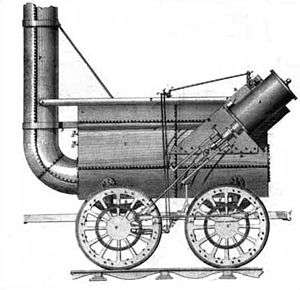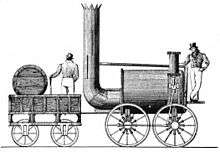Bolton and Leigh Railway
Bolton and Leigh Railway | ||||||||||||||||||||||||||||||||||||||||||||||||||||||||||||||||||||||||||||||||||||||||||||||||||||||||||||||||||||||||||||||||||||||||||||||||||||||||||||||||||||||||||
|---|---|---|---|---|---|---|---|---|---|---|---|---|---|---|---|---|---|---|---|---|---|---|---|---|---|---|---|---|---|---|---|---|---|---|---|---|---|---|---|---|---|---|---|---|---|---|---|---|---|---|---|---|---|---|---|---|---|---|---|---|---|---|---|---|---|---|---|---|---|---|---|---|---|---|---|---|---|---|---|---|---|---|---|---|---|---|---|---|---|---|---|---|---|---|---|---|---|---|---|---|---|---|---|---|---|---|---|---|---|---|---|---|---|---|---|---|---|---|---|---|---|---|---|---|---|---|---|---|---|---|---|---|---|---|---|---|---|---|---|---|---|---|---|---|---|---|---|---|---|---|---|---|---|---|---|---|---|---|---|---|---|---|---|---|---|---|---|---|---|---|
Legend
| ||||||||||||||||||||||||||||||||||||||||||||||||||||||||||||||||||||||||||||||||||||||||||||||||||||||||||||||||||||||||||||||||||||||||||||||||||||||||||||||||||||||||||
The Bolton and Leigh Railway (B&L) was the first public railway in the historic county of Lancashire, England. It was promoted primarily as a mineral line in connection with the coal pits belonging to William Hulton west of his estate at Over Hulton and collieries belonging to the Fletchers at Atherton, and opened in 1828 for goods between Pendlebury Fold and Bolton.
History
The company obtained its Act of Parliament on 31 March 1825 to build a railway line "from the Manchester Bolton & Bury Canal at Bolton to the Leeds and Liverpool Canal at Leigh". The line was operated by steam locomotives and had two stationary steam-hauled inclined planes. George Stephenson was appointed the chief engineer.
The single-track line, built to carry goods, mainly coal and raw cotton to the cotton mills in Bolton from the Port of Liverpool via the Leeds and Liverpool Canal, was 7 1⁄2 miles (12.1 km) long. The first section opened on 1 August 1828 between Derby Street Bolton and William Hulton's collieries at Pendlebury Fold near Chequerbent in Westhoughton.[1][2] Fletchers sidings near Bag Lane provided a connection for Fletcher's collieries at Howe Bridge in Atherton. The railway opened two years before the Liverpool and Manchester Railway (L&MR). The route was surveyed and prepared by George Stephenson, but engineered by Robert Daglish, a local man who built a locomotive for the Orrell Colliery Railway.[3] The railway was single track with two rope worked inclines using stationary steam engines, one generating 20 horse power at Daubhill and a 50 horse power engine at Chequerbent.[1] The first locomotive, Lancashire Witch was built by George and Robert Stephenson.[4] It was originally intended for the L&MR but was delivered temporarily to the B&LR as it opened first, and later moved to the L&MR for use in its construction. While with B&LR it was used to haul trains up the 1 in 33 gradient at Daubhill.[2] After the Rainhill Trials it was replaced by Timothy Hackworth's Sans Pareil. The line was completed to the Leeds and Liverpool Canal at Leigh by end of March 1830.[5]
The railway operated from Bolton Great Moor Street to Leigh. In 1829, the 2.5 miles (4.0 km) long Kenyon and Leigh Junction Railway (K&LJ) was incorporated to link the Bolton & Leigh Railway with the Liverpool and Manchester Railway, joining it at Kenyon Junction near Warrington.[4] The Act of Parliament (10 George IV. Cap.36) received Royal Assent on 14 May 1829.[6] At first, the railway was freight only, but a passenger service started on 13 June 1831.[7]
The Bolton and Leigh Railway was absorbed by the Grand Junction Railway on 1 June 1845.
Locomotives


Early locomotives include Lancashire Witch and Sans Pareil, which had competed in the Rainhill Trials. Sans Pareil was used on the railway until 1844, when it was sold to the Coppull Colliery, Chorley and used as a stationary engine until 1863 when it was presented to the Patent Office Museum (now the Science Museum) by John Hick.[8] In 1831 the railway owned three other locomotives, Union built in 1830 by Rothwell, Hick and Rothwell Bolton, Salamander and Veteran both built by Crook & Dean in Bolton.[9]
Stations
Openings
The original stations on the line were Bolton,[7] Bag Lane[10] and Leigh in Westleigh.[11] Kenyon Junction, on the L&M, opened on 1 March 1831.[12] Further stations opened at Daubhill[13] and Chequerbent[14] in 1846, along with Bradshaw Leach on the K&LJ.[15] In 1871, the original station at Bolton Great Moor Street was closed by the London and North Western Railway (LNWR) for reconstruction, and a temporary station opened at Crook Street, which was open from 1 August 1871 to 28 September 1874. The new Great Moor Street station opened on that date, having been rebuilt on its original site but some ten feet (three metres) higher. A new direct line to Manchester via Roe Green opened on 1 April 1875.[7]
In the 1880s, the LNWR decided to remove the inclines at Daubhill and Chequerbent. A new alignment was built at Daubhill, and a new station opened to replace the original. The new alignment included a short tunnel. The original line was retained as a freight line at each end, but severed in the middle.[13] The new Daubhill station opened on 2 February 1885, and was renamed Rumworth & Daubhill on the 28 April of that year.[16] At Chequerbent, a new alignment and station was also built, but the original line remained in its entirety, serving the Chequerbent Pits.[17] The last station to open was Atherleigh which the London, Midland and Scottish Railway opened on 14 October 1935 as there had been new housing development in the area.[18]
Closures
The original stations at Daubhill and Chequerbent closed on 2 February 1885, both due to replacements opening on the new alignment.[13][14] Up until 1939 the passenger service was regular and between Atherton and Bolton trains ran more or less half-hourly. As with other lines, wartime economies reduced services to a minimum. The war over, services did not return to their pre-war levels (see 1947 LMS Timetable and 1951 Bradshaw Guide) there were just six trains daily in each direction. The station at Chequerbent and that at Rumworth & Daubhill closed to passengers on 3 March 1952.[16] All other stations between Bolton Great Moor Street and Pennington inclusive closed to passengers on 29 March 1954,[7] with Atherleigh,[18] West Leigh[11] and Pennington[15] closing completely on this date. Some rugby and holiday special trains served Great Moor street until 1958.[7] Atherton Bag Lane closed to freight on 7 October 1963, Chequerbent closed to freight on 27 February 1965[10] and Rumworth & Daubhill closed to freight on 29 March 1965. The date of closure of Bolton Great Moor Street station to freight is not recorded, but the last of the rails on the line were lifted in 1969.[7] Kenyon Junction closed to passengers in 1960 and to all traffic on 1 August 1963, although the main line is still open to traffic.[12]
References
- 1 2 Sweeney (1996), p.7
- 1 2 "Railways of Bolton". Bolton. Retrieved 2008-04-12.
- ↑ Sweeney (1996), p.1
- 1 2 "Bolton and Leigh". Spartacus Schoolweb. Retrieved 2008-04-12.
- ↑ Reed, Malcolm C (1996). The London & North Western Railway. Atlantic Transport Publishers.
- ↑ "KENYON AND LEIGH RAILWAY.". Jim Shead. Retrieved 2008-04-12.
- 1 2 3 4 5 6 "BOLTON GREAT MOOR STREET". Subterranea Britannica. Retrieved 2008-04-12.
- ↑ "THE STORY OF THE LOCOMOTIVE - 1". Mike's Railway History. Retrieved 2008-04-12.
- ↑ Sweeney (1996), p.8
- 1 2 "ATHERTON BAG LANE". Subterranea Britannica. Retrieved 2008-04-12.
- 1 2 "WEST LEIGH". Subterranea Britannica. Retrieved 2008-04-12.
- 1 2 "KENYON JUNCTION". Subterranea Britannica. Retrieved 2008-04-12.
- 1 2 3 "DAUBHILL". Subterranea Britannica. Retrieved 2008-04-12.
- 1 2 "CHEQUERBENT (1st Site)". Subterranea Britannica. Retrieved 2008-04-12.
- 1 2 "PENNINGTON". Subterranea Britannica. Retrieved 2008-04-12.
- 1 2 "RUMWORTH & DAUBHILL". Subterranea Britannica. Retrieved 2008-04-12.
- ↑ "CHEQUERBENT (2nd Site)". Subterranea Britannica. Retrieved 2008-04-12.
- 1 2 "ATHERLEIGH". Subterranea Britannica. Retrieved 2008-04-12.
Bibliography
- Sweeney, D.J. (1996). A Lancashire Triangle Part One. Triangle Publishing. ISBN 0-9529333-0-6.
External links
- British Railways in 1960 - Bolton Great Moor St. to Fletcher Street Jn.
- British Railways in 1960 - Fletcher Street Jn. to Leigh
- A concise history via Leigh Life